How to differentiate native Florida snakes from invasive Burmese pythons
Have you ever seen a Burmese python, and would you know if you did?
Well, don't go chopping the heads off snakes until you know what you're wrestling with as several native snakes are sometimes mistaken for young Burmese pythons, according to the Florida Fish and Wildlife Conservation Commission, or FWC.
"As adults, they are larger than almost all native snakes," an FWC website reads. "Typical Burmese pythons are tan in color with dark blotches along the back and sides."
Check out these photos of the big snake: Python Week: 10 amazing photo galleries of the snake invading Florida
Our best archive images to review: 28 of the best Burmese python photos from our archives
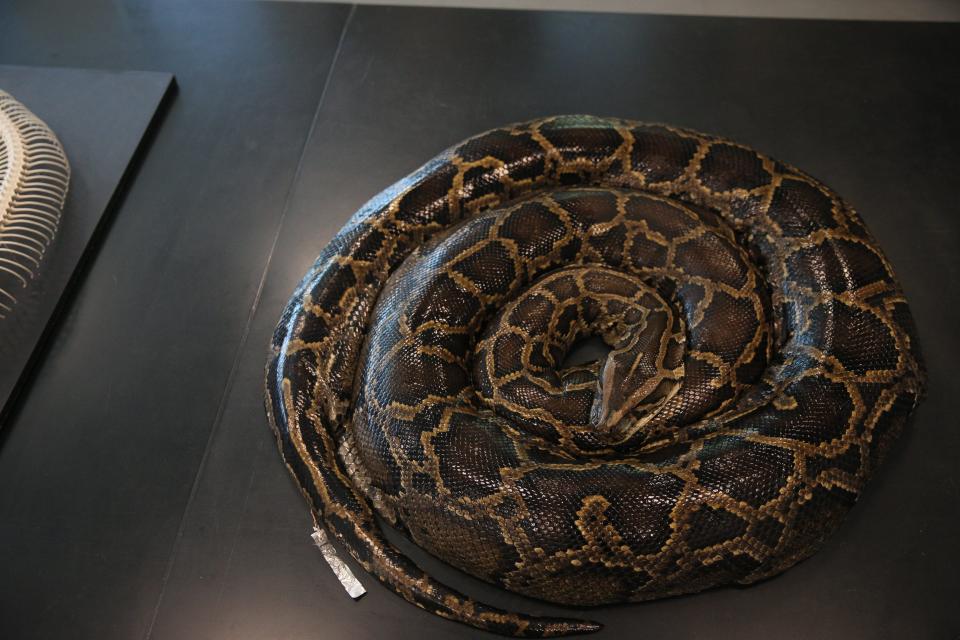
While most people realize that any 18-foot, 200-pound snake is a Burmese python that doesn't belong in Florida, smaller pythons can resemble native snakes like the coachwhip, Eastern diamondback, red rat snake, cottonmouth, Eastern Indigo snake and water snake.
Large, brown patches cover the length of the body, and there are distinguishing dark wedges on their heads.
The pattern on their skin looks almost like a giraffe, with the blotches lining up in a puzzle-like pattern.
Other constrictors have been reported as Burmese pythons as well, including the ball python, boa constrictor and North African python, according to FWC.
Coachwhip
This snake averages 4 to 6 feet in length and is typically black on the head. Coachwhips are relatively slender snakes with large heads and round pupils. Extremely fast, harmless and non-venomous, coachwhips are found throughout Florida, except for the Florida Keys, in habitats like flatwoods, sandhill, scrub, and beach dunes, according to FWC.
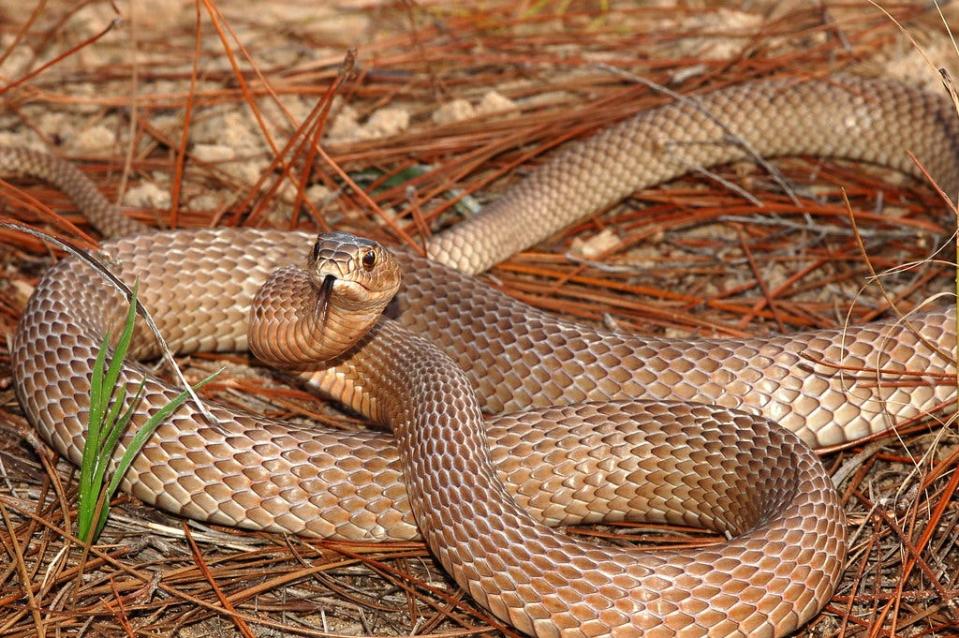
Cottonmouth
Dark-colored, heavy-bodied snakes that grow from 2 to 4 feet, cottonmouths (also called water moccasins) have a diamond-shaped head and are venomous.
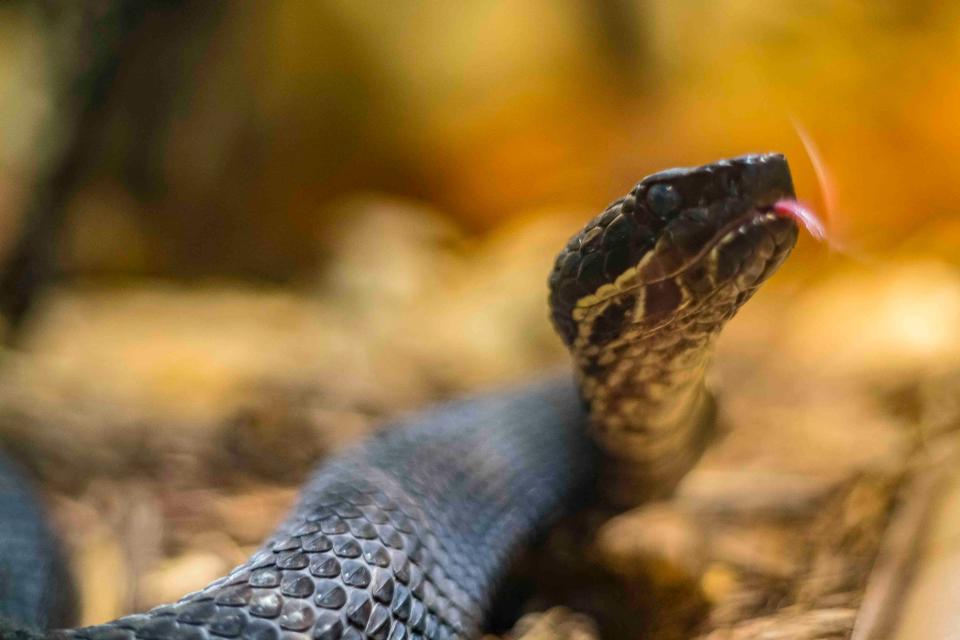
"Cottonmouths have a broad head and a dark stripe that runs through the eye, and there is a deep facial pit between the eye and the nostril," an FWC website reads.
The vertical pupils and pitted areas above the head are dead giveaways for cottonmouths, which, themselves, are often confused with water snakes.
These videos document python coverage: Pythons caught on video include record catch and hunting adventure
Eastern diamondback
A dangerous snake, Eastern diamondback snakes have rattles, which distinguishes them from other snakes found here.
The pattern on their skin can resemble that of a Burmese python.
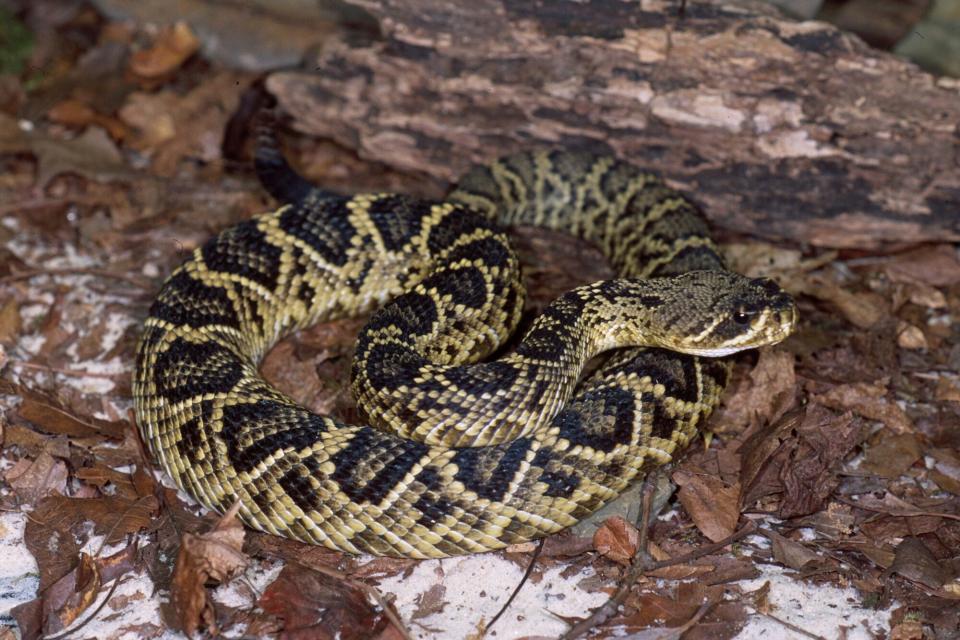
Eastern Indigo
These large snakes are mostly black in appearance, but they are still mistaken for Burmese pythons, according to the FWC.
Eastern Indigo snakes are non-venomous and not a threat to humans. They should not be killed but released back into the wild if found or captured.
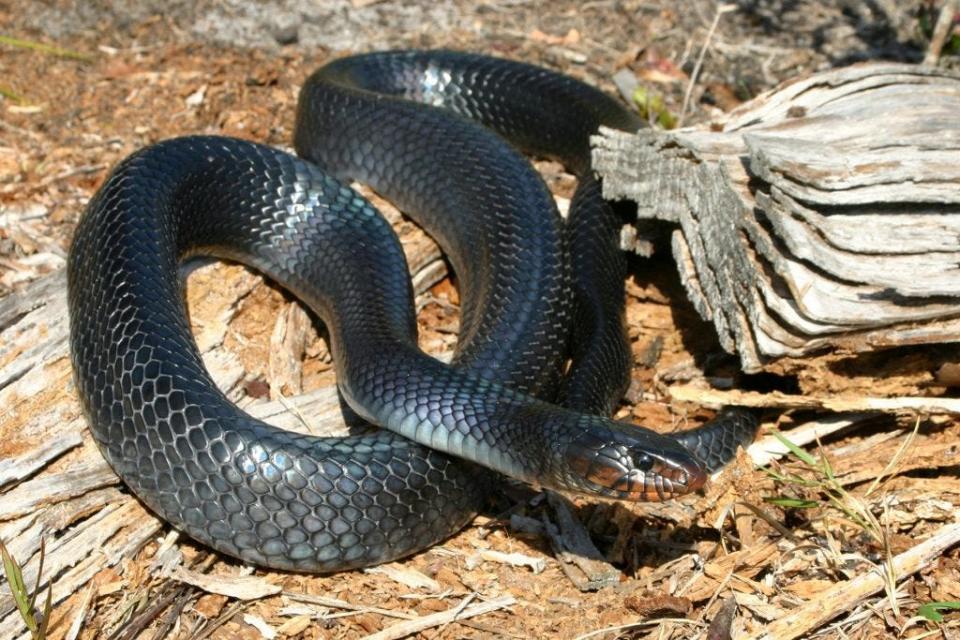
Red rat
Although they appear a reddish-orange with yellowish stripes, red rat snakes are also confused with the invasive Burmese python.
This species is harmless to humans.
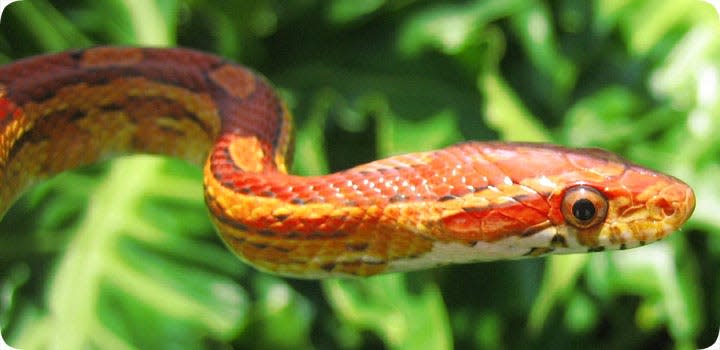
Known for their climbing skills, red rat snakes can grow to be 6 feet in length, which is about the size of a juvenile female python or adult male python.
Red rat snakes exist in every county in Florida and feed mostly on small mammals, according to FWC.
Water snake
The head of the water snake is narrow and pointed, kind of the opposite of the head found on Burmese pythons.
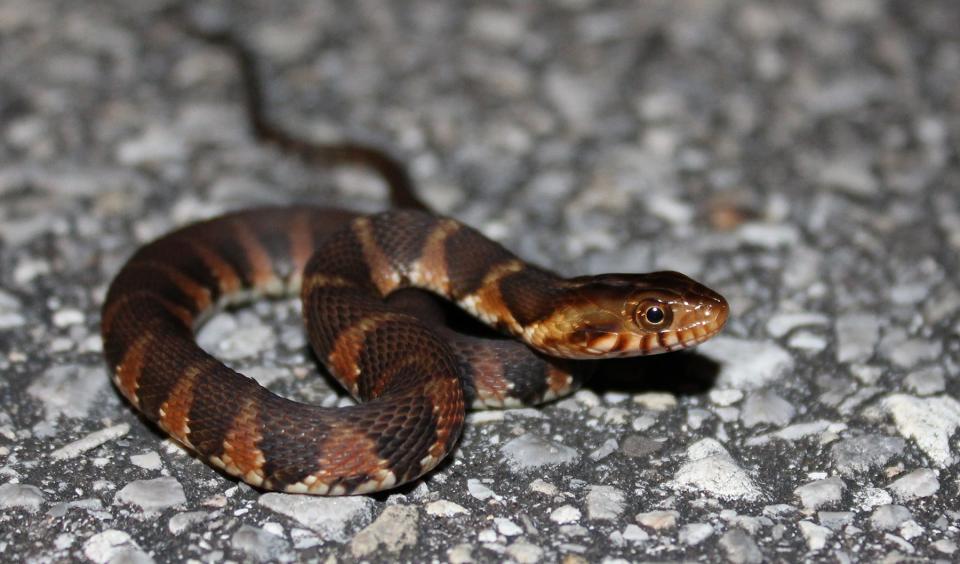
They grow to more than 4 feet and live in all of the Sunshine State except the Florida Keys.
Connect with this reporter: Chad Gillis on Facebook.
This article originally appeared on Fort Myers News-Press: Florida native snakes can be mistaken for Burmese pythons

